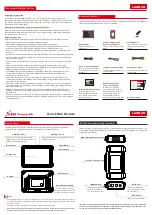
RTC
®
5 PC Interface Board
Rev. 1.9 e
10 Commands And Functions
446
innovators for industry
Delayed Short
List Command
set_laser_timing
Function
defines the output period and the pulse lengths for the laser signals LASER1 and LASER2
for “laser active” operation.
Call
set_laser_timing( HalfPeriod, PulseLength1, PulseLength2, TimeBase )
Parameters
HalfPeriod
half of the output period in
bits
as an unsigned 32-bit value
• In RTC
®
5 mode:
1 bit equals 1/64
µ
s.
Permissible range: [0 … (2
32
–
1)]
• In RTC
®
4 compatibility mode:
1 bit equals 1/8
µ
s or 1
µ
s
, depending on the selected time base.
With respect to the specified
TimeBase
, the value will be converted to
an integer-multiple of 1/64
µ
s. The permissible range is correspond-
ingly smaller.
PulseLength1
Pulse lengths of the laser signals LASER1 and LASER2 in
bits
as an
unsigned 32-bit value.
• In RTC
®
5 mode:
1 bit equals 1/64
µ
s.
Permissible range: [0 … (2
32
–
1)]
• In RTC
®
4 compatibility mode:
1 bit equals 1/8
µ
s or 1
µ
s
, depending on the selected time base.
With respect to the specified
TimeBase
, the value will be converted to
an integer-multiple of 1/64
µ
s. The permissible range is correspond-
ingly smaller.
(PulseLength2)
(as an unsigned 32-bit value)
The value of
PulseLength2
will be ignored and is no longer used.
With the RTC
®
5, the pulse lengths of laser signals LASER1 and LASER2
are always identical and are definable via
PulseLength1
.
TimeBase
as an unsigned 32-bit value
• In RTC
®
5 mode, the value is ignored and the clock frequency is fixed
at 64 MHz (
1 bit equals 1/64
µ
s
).
• In RTC
®
4 compatibility mode, the
TimeBase
value is handled as
follows:
=0: sets the time base to 1 MHz (
1 bit equals 1
µ
s
)
0: sets the time base to 8 MHz (
1 bit equals 1/8
µ
s
)
















































